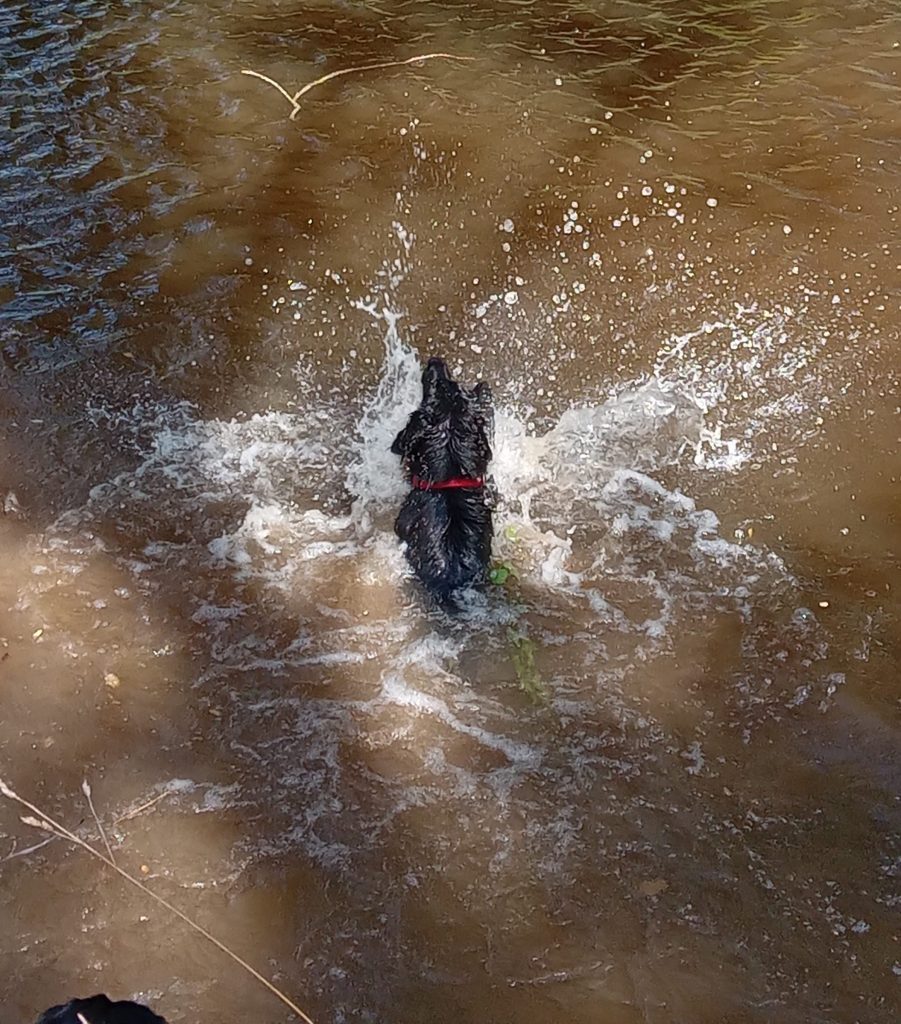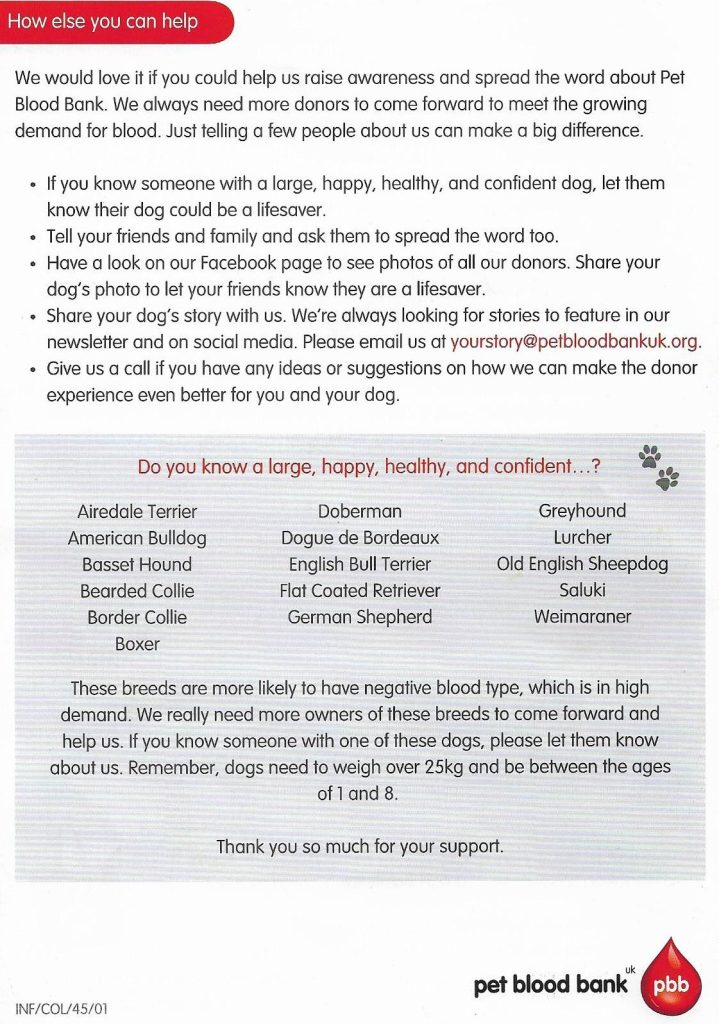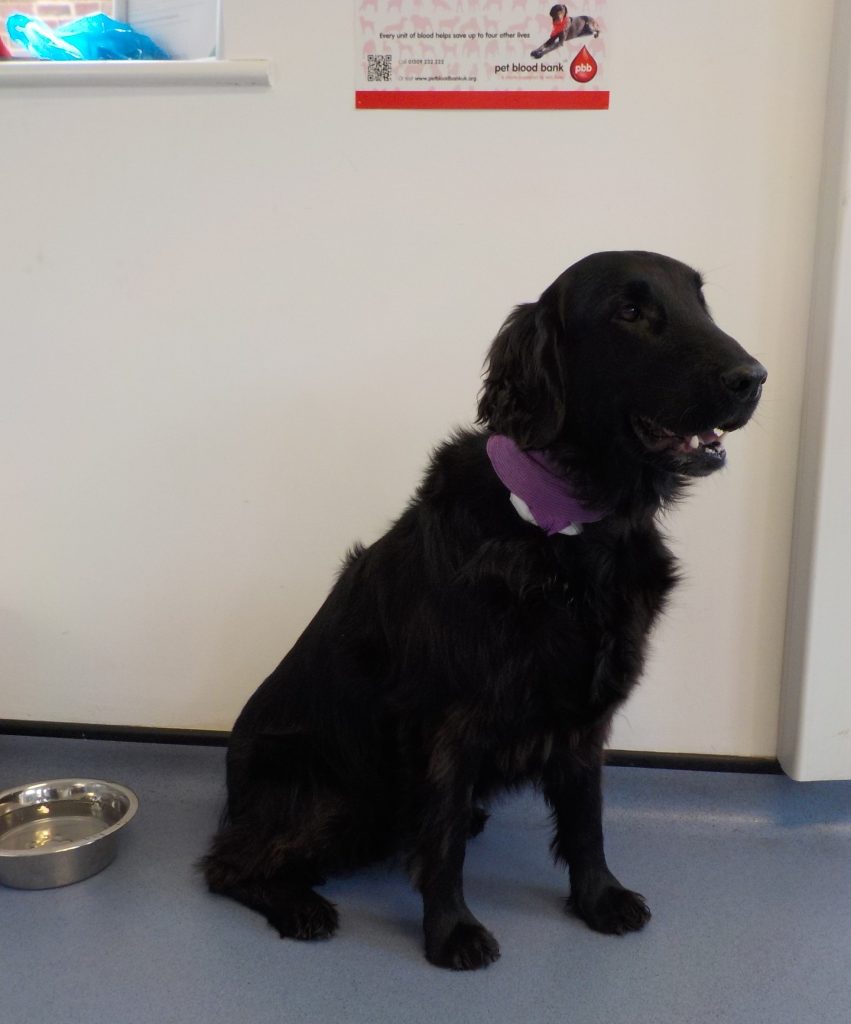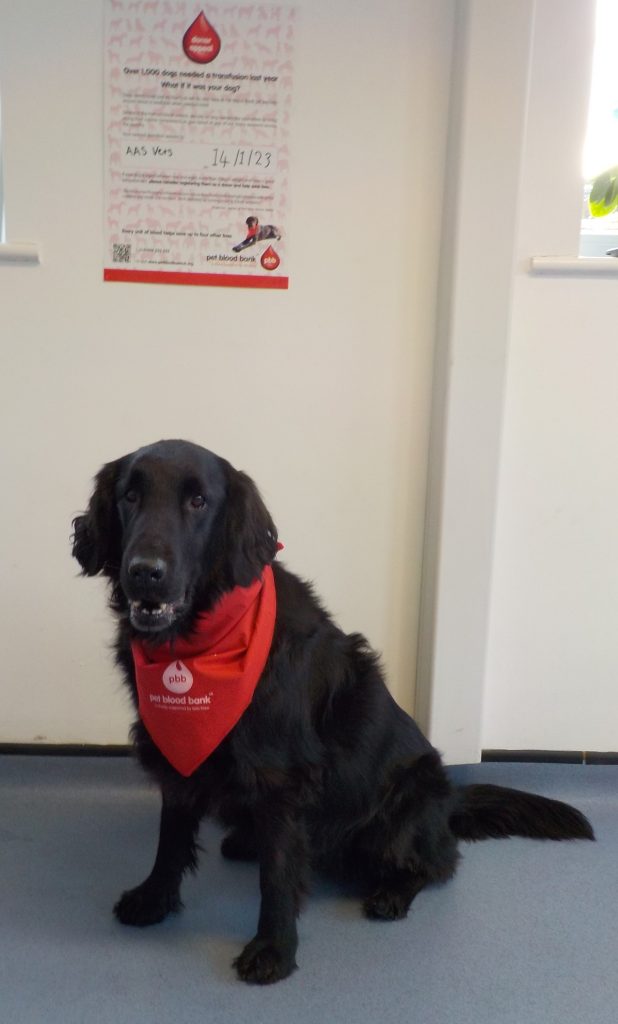The Flat Coated Retriever Rescue Network: News in February 2023
General News
The Flat Coated Retriever Rescue Network (FCRRN) send our greetings for the New Year to our supporters and other readers of this newsletter.
The FCRRN are pleased to have been able to contribute to the rescue of several flat coated retrievers during our first calendar year of activity(1,2,3,4,5). We are not interested in competing with other rescue organisations for the surrender of a flat coated retriever. We are not interested in bragging about a rescue because we know how painful a surrender can be. We are interested in collaborating with others to find a better home for a flat coated retriever in need; consistent with our key aim and principles(1,2).
We have received five inquiries about a possible surrender of a flat coated retriever since the November newsletter. However a surrender has not taken place and the current guardians know they can come back to us if they wish. These inquiries are further examples of the green light which refers to the moving comment in Amy Bloom’s recent book (Bloom, 2022) where, in a different context, receiving a green light that help is available provides, “the reassurance, the insurance,” and that is all that is needed for now.
The latest data from the Kennel Club (Kennel Club, 2022) for the registration of puppies show an increase of 25% in 2021 compared to the average annual number (n=1200) since 2012 so about 300 additional puppies born in 2021 will be entering their teenage phase in 2023. The 2021 percentage increase is similar in other breeds e.g. Irish setter, standard poodle, Weimaraner, Dobermann, and it probably represents a catching up of breeding following the removal of the 2020 COVID-19 restrictions.
Currently there seems to be a trend for more flat coated retriever puppies to be advertised on the Internet than in previous years. Internet prices for pure bred flat coated retriever puppies range from £1200 to £1800.
Meanwhile the rescue centres report a surge of activity following the winter festival holiday.
Jess
Two supporters of the FCRRN shared the news of Jess (pseudonym), an 18 month old female flat coated retriever, who was rescued six months ago because the surrendering guardians, “did not have enough time,” (sic) to look after her. Jess’s new guardians are neighbours of our supporters and our supporters see her regularly on their walks. The adoption was arranged outwith a rescue organisation. Happily Jess has settled in well and, “she is an absolute sweetheart,” (sic). It is a salutary reminder that a rescue can be successfully arranged in this way.
Donations to the FCRRN
One of the FCRRN’s supporters is an artist of some distinction and she has offered to donate notelets with her flat coated retriever portraits or floral portraits as well as some of her pictures. The FCRRN have thanked her and assured her that we do not take her offers for granted or treat them casually. We have explained that there has been minimal expenditure to date and we shall approach her if/when some fundraising is necessary.
Nugget
Readers of the November newsletter(5) will remember Nugget (pseudonym), a female flat coated retriever aged 12 months, who was potentially looking to be rehomed. The guardians have decided to keep her and to try and provide, “the something more,” (sic) that she needs. The guardians have been reassured that the FCRRN remain available to help if/when they wish to contact us.
Canine polyarthritis
There was an article about this subject in the November newsletter(5), focussing on immune-mediated polyarthritis (IMPA), and we received two pieces of feedback –
(a) The information on IMPA is very interesting, we see it so rarely, it is strange that we had one come in the door on Tuesday, the day after you sent me the newsletter! This was in a Kangal shepherd. I shall forward this information on to the other vets. (Source: FCRRN supporter who is a vet).
(b) I found the information and research about canine arthritis very absorbing, particularly now that Lennox (pseudonym), aged ten years, is showing some mild symptoms. (Source: FCRRN supporter who adopted a younger flat coated retriever last year).
Max: A rescue success
Also in the November newsletter(5) Max (pseudonym) was mentioned in the context of rolling in cow waste slurry and shaking inside the car. Max is a male flat coated retriever aged five years who has gained confidence exponentially since he was rescued in 2021. The feedback about Max’s escapade was –
(a) I laughed at the story about Max! My dashboard is regularly splashed with mud and I don’t know how they manage to do that! (Source: FCRRN supporter who is guardian to a rescued flat coated retriever).
(b) I particularly liked the story of Max – although I really feel for his “guardians.” It’s wonderful; thank you so much for sending it on! (Source: FCRRN supporter who is guardian to a Rhodesian ridgeback).
Max’s latest escapade was to jump, or maybe fall, into a lock. His guardian explained that there was a gap of at least one metre between the water level and ground level and steep sides with no footholds. She could not open the lock gates as she did not have the key. Max was becoming anxious and his normal swimming style of vertical, creating much splashing, became exaggerated.
His guardian climbed down some metal ladder rungs fitted into a small alcove inside the lock from where she enticed Max to come to her. She hoped he might get a purchase with one paw (he did not) but also that she could climb out in the event of losing her balance and falling into the water (she did not)! Happily once she held his collar and scruff Max went fully relaxed and gave no contribution, so she pulled 33kg of wet Max one metre vertically until he could get his front feet on the edge. He then began to help and out he came.
Once towelled off and in the car, Max was at teeth chattering stage, so the car heater was turned to high for the 10 mile journey home. He seemed fine at home and promptly went to sleep in his chair.

Picture: Max in his normal “vertical” swimming style (not in the lock)
Lost flat coated retriever
One of the FCRRN’s supporters notified us in December 2022 of a young flat coated retriever who was briefly lost in the west Midlands. Happily she was reunited with her guardians but there was an anxious 24 hours before she was reunited. Her microchip had not been registered with the microchip manufacturer’s database and only a series of serendipitous contacts between guardians, breeders, et alia, enabled her to rejoin her guardians.
There is a list of some 19 databases at: https://www.gov.uk/get-your-dog-microchipped
The experience of this young flat coated retriever in December is a timely reminder about registering the microchip and keeping the contact details up to date. There is some useful advice on the Hereford and Worcester Animal Rescue website – https://hwanimalrescue.co.uk/
I expect many readers will have responded to the distressing case of Bodie(3) by checking that the microchip in their flat coated retriever is still readable, registered on the manufacturers database, their contact details on the database are up to date, and they know how to contact the database and their vet if their dog is lost.
Blood doning
Lucie is a seven years young flat coated retriever who was rescued four years ago to our home. She has recently joined the Pet Blood Bank UK and she gave her first donation earlier this month.

Picture: Pet Blood Bank; extract from the information sheet https://www.petbloodbankuk.org/
The Pet Blood Bank are keen to recruit dogs who weigh more than 25kg and who are between one and eight years. Flat coated retrievers are especially good donors because of their nature (sic) and many are Dog Erythrocyte Antigen (DEA) 1.1 negative which makes them universal donors (Cotter, 2017).
The enrolment process is very straight forward and booking an appointment near to home is easy because the Pet Blood Bank have peripatetic donation teams that travel widely across the UK.
The donation process has three parts and the guardian is encouraged to be present throughout as usually she/he is a calming influence. The three parts are –
Part 1: Pre-donation health check with a vet and a nurse.
Part 2: Donation with a different vet and two nurses which takes five to 10 minutes.
Part 3: Post-donation observation with drinks, treats, choice of a toy, bandana and photograph.

Picture: Lucie during the post-donation observation period
The purple pressure dressing is removed after about 20 minutes and in total, the donation process takes about 45 minutes.
Lucie relished the experience because of all the kindness from the donation team and the treats. She was advised to rest for the remainder of the day and to return to her normal routine the next day. In fact Lucie was more than ready for her supper once we returned home and she has been fine subsequently. As her blood type is DEA 1.1 negative she can donate every two months and she has an appointment in March 2023.
It was heartening to see how Lucie enjoyed the donation process particularly in view of her distressed state when she was rescued following alleged attacks by other dogs and humans.
I should add that the Pet Blood Bank are a registered charity (Scottish Charity No: 037745) and they use fundraising to subsidise their costs. The costs charged to vets for blood or platelets cover the funds needed to run the service and the Pet Blood Bank have an agreement with vets who use the donated products that there is no mark-up charge to guardians. See: https://www.petbloodbankuk.org/about-us/our-commitment-to-welfare/

Picture: Lucie homeward bound
Cotter, S. M. (2017). Blood Groups and Blood Transfusions in Dogs. Retrieved from:
www.msdvetmanual.com/dog-owners/blood-disorders-of-dogs/blood-groups-and-blood-transfusions-in-dogs#
www.msdvetmanual.com/circulatory-system/blood-groups-and-blood-transfusions/overview-of-blood-groups-and-blood-transfusions-in-animals
Conclusion
There was a thought-provoking article by Rob Armstrong (Armstrong, 2023) in the Weekend Financial Times recently about the joys and challenges of rescue and adoption.
Billie is a male, mixed breed dog who was rescued during the COVID-19 pandemic and he was adopted by the Armstrong family consisting of two adults and three children. Billie is frightened of other dogs and humans and his defence mechanisms are to run or bite. However he is not vicious and if elaborate introductions take place then he will act normally towards dogs and people.
Armstrong makes clear that euthanasia was considered but Billie is highly affectionate towards his family. For examples, when there are fireworks or loud noises outside he goes from room to room to check everyone is okay; when the humans are hugging or kissing he wants to participate enthusiastically; he gives a lively greeting to each person when they return home and sleeps close by if possible.
Armstrong comments that, “the world is full of self-appointed experts in canine behaviour, but it is an area where theory and practice stay stubbornly far apart,” (sic) and I would add that advice or criticism are often contradictory.
Armstrong concludes by stating that the family are keeping Billie because they love him; not only is he devoted to all the family but Armstrong identifies with Billie’s default view on the rest of the world which is that they are a threat unless there is clear evidence to the contrary.
I can understand the challenges caused by Billie’s behaviour due to his past experiences but he loves his adopted family and his default view of the world is entirely understandable in my opinion. When we adopt a flat coated retriever or any other dog, it is our responsibility to identify their needs and to respond to them, and thereby to improve their quality of life and to build their trust.
This is what we do in the Flat Coated Retriever Rescue Network(1) so please could you remember us if, via any route, you learn that a surrender or adoption is being considered.
Dr. Iain J. Robbé
On behalf of the Flat Coated Retriever Rescue Network (FCRRN)
Email: walesandwm@gmail.com
http://www.iainrobbe.com/fcrrn_06/
“Rescues R Us”
Experts: none of the FCRRN is acting in the capacity of an expert; each contributor is offering their advice based on accessible evidence. If you are concerned about any subject in the newsletters then you should consult a veterinary professional, legal professional or other professional.
© 2023 Flat Coated Retriever Rescue Network
(1) http://www.iainrobbe.com/fcrrn_01/
(2) http://www.iainrobbe.com/fcrrn_02/
(3) http://www.iainrobbe.com/fcrrn_03/
(4) http://www.iainrobbe.com/fcrrn_04/
(5) http://www.iainrobbe.com/fcrrn_05/
Armstrong, R. (2023, January14/15). What Friendship Can and Can’t Overcome. Financial Times Weekend, p. 15.
Bloom, A. (2022). In Love. A Memoir of Love and Loss. London: Granta Publications.
Kennel Club. (2022). Comparative Tables of Registrations. Retrieved from:
www.thekennelclub.org.uk/media/2402/quarterly-breed-stats-gundogs.pdf
www.thekennelclub.org.uk/media/2393/10yrstatsgundog.pdf
